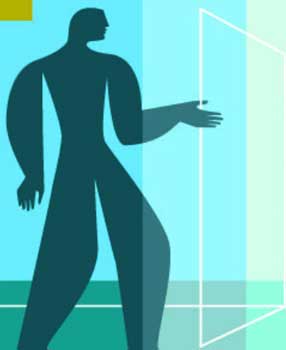SUMMER 2008 CONTENTS
Home
Good as Gold?
New drug approvals ebb; doubts over testing's gold standard grow
Q&A with Katie Couric
Standing up for cancer research
Breath of Hope
Lifeline or gamble? Sometimes a clinical trial is both
Just Another Lab Rat
The human subjects trade is booming, largely without oversight
Fixing Trial Tribulations
Solutions from Stanford
A Spoonful of Sugar Pills
Why nothing really is something, and in some ways is better than anything
Banding Together
Minds of all kinds join to hasten discoveries of new medical treatments


Banding Together
Minds of all kinds join to hasten discoveries of new medical treatments
By Rosanne Spector
Illustration by Paul Wearing
A large federal grant recognizing the medical school’s potential to translate laboratory discoveries into advances in health care has placed Stanford among a core group of academic medical centers funded to crack this surprisingly hard problem.
The grant is a Clinical and Translational Science Award of $30 million over five years. The award, announced in May by the National Institutes of Health, links Stanford to the CTSA consortium of 38 academic health centers working to speed medical progress, each according to its own strategy.
Stanford’s approach will focus on interdisciplinary connections between the medical school, the rest of the campus and innovators from businesses in Silicon Valley. The crux of the effort will be the Stanford Center for Clinical and Translational Education and Research, an independent institute that will operate outside traditional school boundaries.
“Translating discoveries is more than the School of Medicine,” says the program’s leader, Harry Greenberg, MD, the medical school’s senior associate dean for research. “You need lawyers, psychologists, anthropologists, economists, environmental scientists — all of these — to figure how best to move scientific discoveries into improvements in human health and well-being. What’s unique about Stanford is we can harness the best in those areas.”
The NIH launched the award program in 2006 with 12 centers, adding 12 more the following year and 14 this year. Ultimately it aims to fund approximately 60 centers with an annual budget of $500 million.
Most of the grantees so far are traditional academic health centers, with allied health schools such as public health, nursing, pharmacy and dentistry.
“Stanford has none of these,” says Greenberg. “What we have are highly integrated experts working outside of traditional medicine.”
The NIH established the grant program in 2006 to solve a problem that seems inexplicable to many outside of the medical profession: Despite an explosion in discoveries about human biology, only a small fraction of these insights lead to advances in health care. Part of the problem is that medical school programs tend to be very specialized, with faculty and students focusing either on understanding the basic functions of organisms, or treating patients. There’s little incentive to launch risky, time-consuming projects that bridge these two worlds.
“The NIH is trying to take the nation’s largely unorganized way of conducting clinical research and bring innovative strategies together in one program, with more centralized direction and management,” says Greenberg.
As a result of the grant, the new Stanford center, known as SCCTER (pronounced “skeeter”), will roll out new programs and services designed to break researchers out of their siloed communities. The center will be based in a new building, the Jill and John Freidenrich Center for Translational Research, to be located just a few minutes’ walk from the medical school — and from Stanford Hospital and Lucile Packard Children’s Hospital — at 800 Welch Road in Palo Alto. The building is slated for completion by the end of 2011 and is funded by a gift from the Freidenrichs.
The grant will allow Stanford researchers to make great advances for health care, says the medical school’s dean, Philip Pizzo, MD. “Stanford’s spectrum of medical, social, engineering, business and related disciplines should propel the CTSA to new vistas that are simply not possible at other medical centers, medical schools or universities,” he says.

Clinical trial central
The nexus of Stanford's effort to accelerate the flow of discoveries from the lab to health practice is the Stanforrd Center for Clinical and Translational Education and Research. Find out more about SCCTER at http://sccter.stanford.edu/

